Land Invertebrates
Media
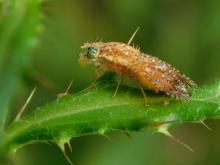
Species Types
Scientific Name
About 300 species in North America north of Mexico
Description
Tephretid fruit flies, in the family Tephritidae, are often called peacock flies for the intricately patterned, often brightly colored wings of many species.
Media

Species Types
Scientific Name
Neacoryphus bicrucis
Description
The white-crossed seed bug, or ragwort seed bug, has a prominent thin-lined pale X dividing zones of red and black. Look for it in places where ragworts are plentiful.
Media
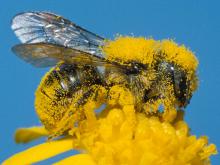
Species Types
Scientific Name
Osmia georgica
Description
The Georgia mason is one of several species of mason bees in Missouri. Like other megachilid bees, it is a native solitary bee that carries pollen in a special clump of hairs on the underside of the abdomen.
Media
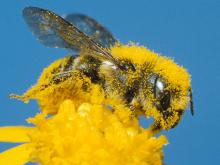
Species Types
Scientific Name
More than 630 species in North America north of Mexico
Description
Megachilid bees are a family of solitary, native bees that carry pollen only on the underside of the abdomen, never on the hind legs. Large cutting mouthparts allow them to collect pieces of leaves, soil, or plant resins to line their nests.
Media
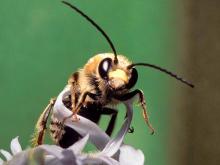
Species Types
Scientific Name
More than 200 species of tribe Eucerini (longhorn bees) in North America north of Mexico
Description
Longhorn bees are named for their long antennae, which make these fuzzy, medium-sized bees look rather cute. Many have yellow faces.
Media
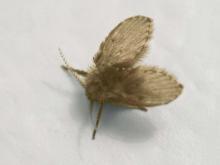
Species Types
Scientific Name
Members of subfamily Psychodinae
Description
Moth flies look like tiny, hairy moths. People usually notice them perching next to sinks in the bathroom or kitchen. When disturbed, they usually don't fly very far before landing again, for they are weak fliers.
Media
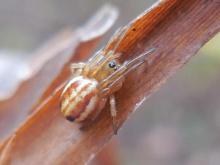
Species Types
Scientific Name
Araneus pratensis
Description
The openfield orbweaver is a common nocturnal orb-weaving spider in Missouri.
Media

Species Types
Scientific Name
Araneus marmoreus
Description
The marbled orbweaver is sometimes called the “pumpkin spider” because its rounded abdomen is sometimes bright orange. The color and markings can vary greatly.
Media

Species Types
Scientific Name
Anthrax georgicus
Description
The field coal bee fly, Anthrax georgicus, has no real common name. Look for it in grasslands, fields, and other open areas.
Media
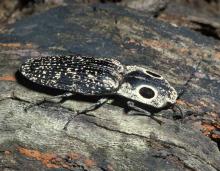
Species Types
Scientific Name
Alaus oculatus
Description
The eyed click beetle is only one of about 1,000 species of click beetles in North America. Most of the others are drab in comparison.
See Also



Media

Species Types
Scientific Name
Cisseps fulvicollis
Description
The yellow-collared scape moth is more often “orange-collared.” And whether you think it looks more like a firefly or a wasp, it’s still a moth!
Media

Species Types
Scientific Name
Nearly 150 species in North America north of Mexico
Description
Slim, delicate plume moths are instantly recognizable by their T-shaped silhouette, long legs, and muted shades of tan and brown. It can be hard to separate the various species.
Media

Species Types
Scientific Name
Pyrrharctia isabella
Description
Not many people know the adult Isabella tiger moth when they see one, but we’re all acquainted with its caterpillar, the woolly worm, or woolly bear.
About Land Invertebrates in Missouri
Invertebrates are animals without backbones, including earthworms, slugs, snails, and arthropods. Arthropods—invertebrates with “jointed legs” — are a group of invertebrates that includes crayfish, shrimp, millipedes, centipedes, mites, spiders, and insects. There may be as many as 10 million species of insects alive on earth today, and they probably constitute more than 90 percent all animal species.





















